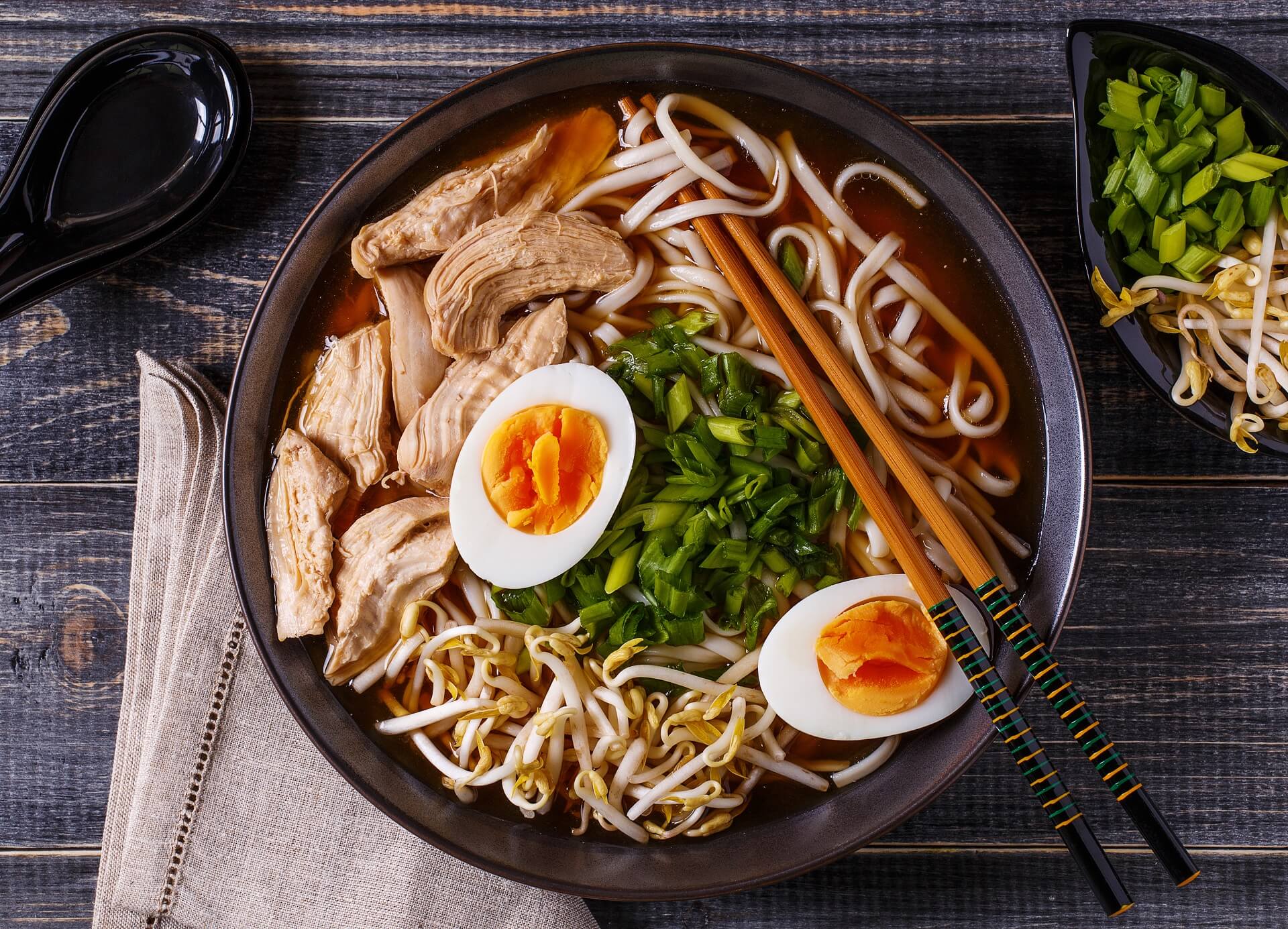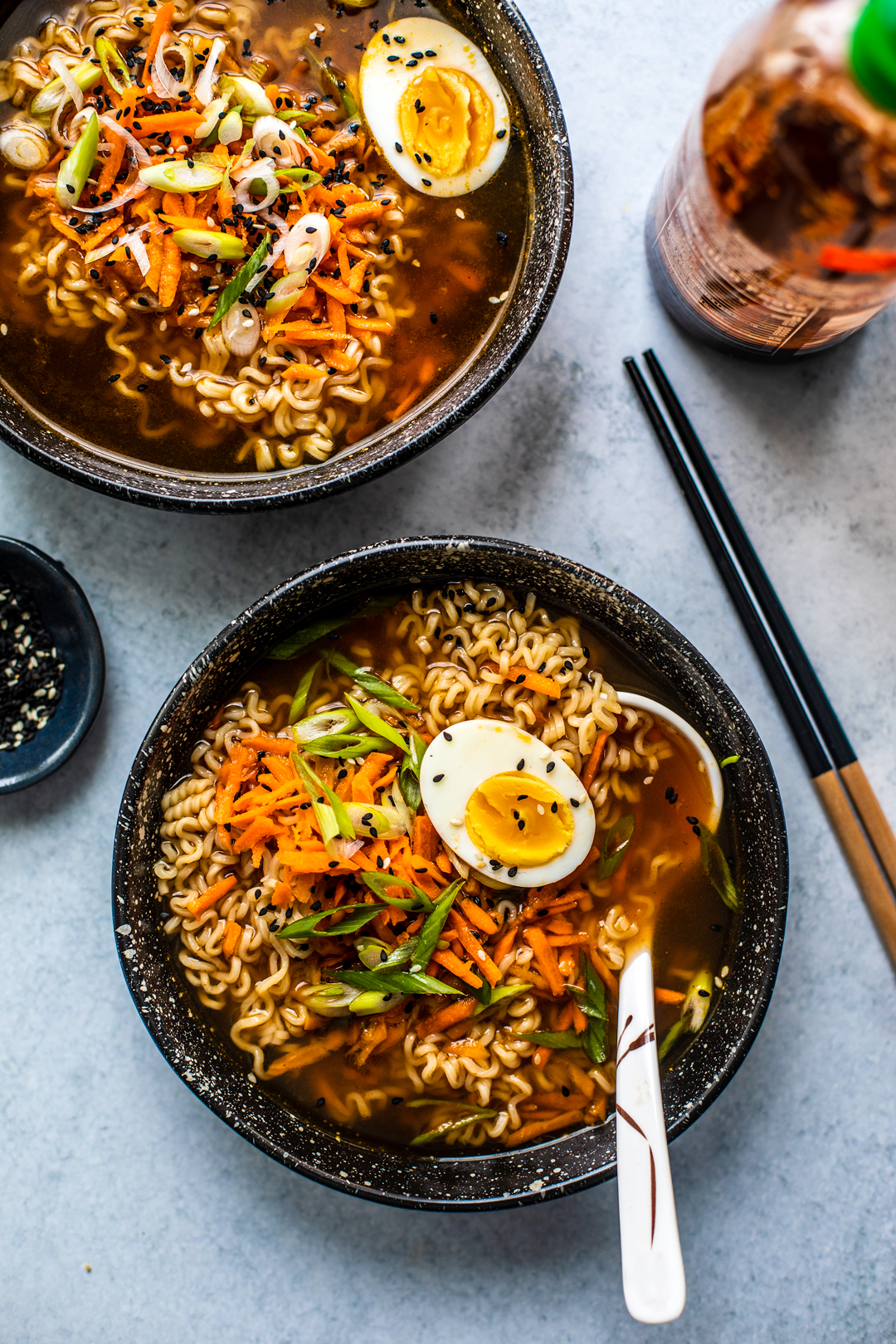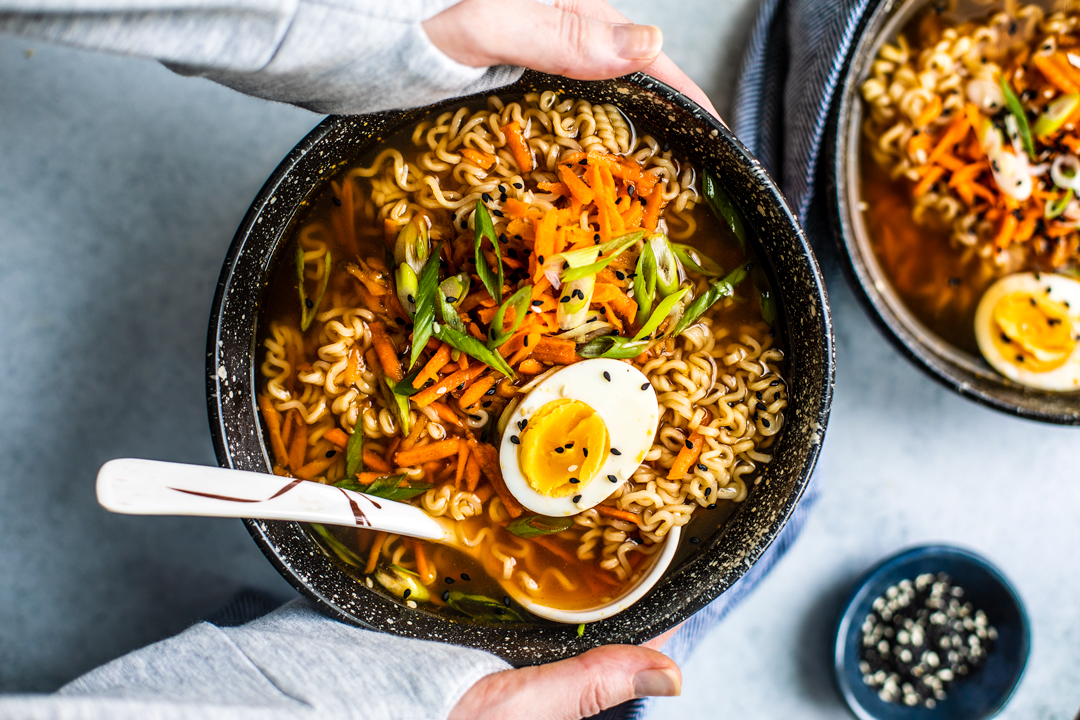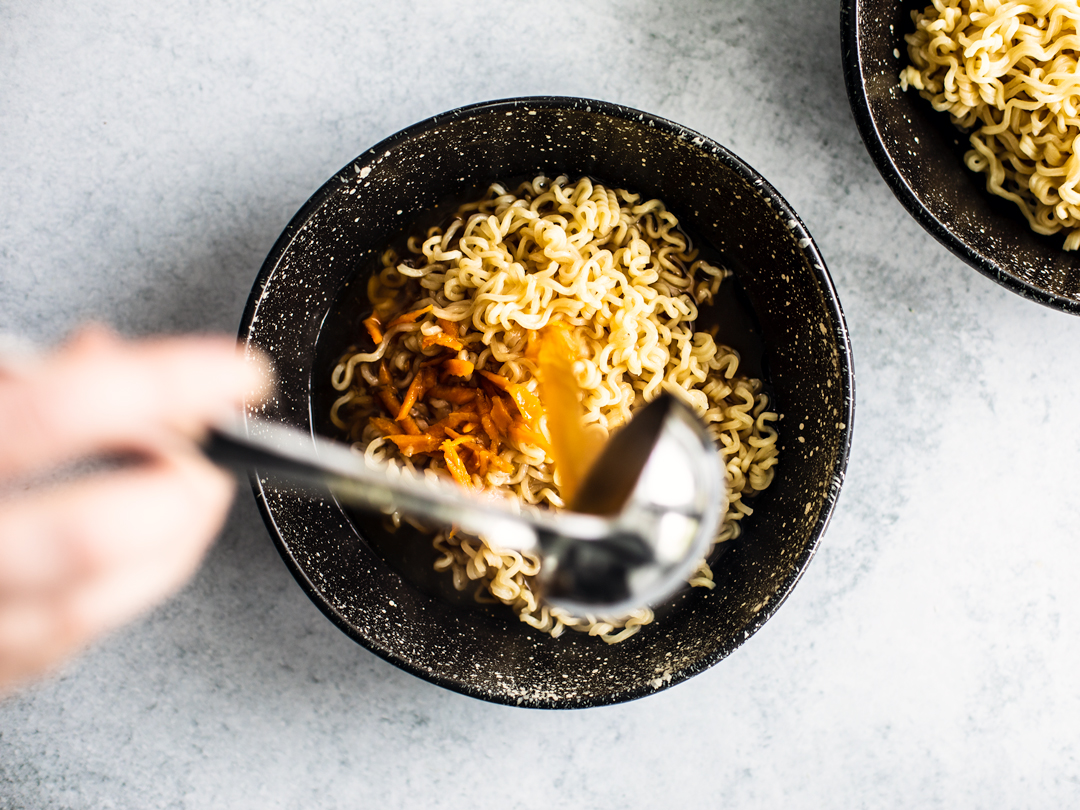Looking for the best Ramen recipe to make at home? These Easy Homemade Ramen Bowls let you make restaurant-worthy soup in the comfort of your own kitchen.
Simply put, ramen is a Japanese noodle soup, with a combination of a rich flavoured broth, one of a variety of types of noodle and a selection of meats or vegetables, often topped with a boiled egg.

How to Make a Ramen Egg
- Bring a small pot of water to a boil, add the egg, and time it for five minutes.
- While the egg is boiling, get an ice bath ready in a bowl big enough to cover the egg.
- When the egg is ready, carefully transfer it from the boiling water to the ice bath and let it cool for about a minute. (The ice bath prevents the egg from cooking further once removed from the hot pot.)
- Finally, lightly crack and roll the egg on a cutting board, peel it, and slice it in half.


What Are Different Types of Ramen?
- Shoyu Ramen. This is the most common style of Ramen. Shoyu is the Japanese word for soy sauce, and that’s exactly what’s simmered into the base of this broth. The result is a light-bodied broth that is brown and clear, unlike the more milky and opaque tonkatsu broth. Intrigued? Check out my recipe for Spicy Shoyu Ramen.
- Shio Ramen. Another light broth—in both body and flavor—is shio, which means salt. This simple broth is golden in color and is made up of chicken or fish bones.
- Miso Ramen. If you’ve had miso soup, then you’re familiar with this cloudy and complex broth. Made with fermented soy bean paste, miso can be white or red in color. The broth is packed with umami and feels thicker on the palate than the lighter broths used for shio or shoyu broths. If this sounds good to you, check out my Miso Ramen.
- Tonkotsu Ramen. Full-bodied, fatty, and satisfying, the tonkotsu broth is the richest of them all. It’s made up of simmered pork bones which break down during the cooking process and release collagen, which makes a broth so thick it’ll coat the back of your spoon! The broth is often fortified with pork or chicken fat. So if you’re ordering yourself some Tonkotsu Ramen from a menu, know that you’re in for an indulgent treat.

- Sesame oil
- Olive oil (or avocado oil)
- Garlic
- Fresh ginger
- Chicken or vegetable broth
- Rice vinegar
- Low sodium soy sauce
- Sriracha or hot chili garlic sauce, like Sambal Oelek
- Shredded carrots
- Shiitake mushrooms (optional)
- Scallions
- Sesame seeds
- Soft-boiled egg
Slurping 101: tips on how to eat a bowl of ramen
FAQ
What does a ramen bowl consist of?
What does traditional ramen have in it?
What are the 5 main ingredients of ramen?
What is a ramen bowl?
1. Menbachi Bowl Menbachi, the Japanese word for “noodle bowl,” is larger and deeper than other bowls. The large opening provided by the greater depth and width makes this the favored type for ramen bowls. Since of their form, menbachi bowls are ideal for meals that call for more soup than noodles because they avoid splashing and spilling broth.
What are the calorie and fat content of Ramen Noodles?
Ramen noodles can have different caloric and fat values depending on the brand, type and method of preparation. For example, 100g of raw noodles has around 157 calories while a serving of dry ramen noodle soup has around 187 calories.
What makes a perfect bowl of ramen?
A perfect bowl of ramen comprises several key components that work together to create a memorable culinary experience. These components include: Ramen Broth: The foundation of a bowl of ramen, the broth sets the flavor profile and can be categorized into various types, such as tonkotsu, shoyu, miso, and shio.
What are the 5 parts of a ramen bowl?
There are 5 basic parts of a ramen bowl. 1. Mikomi (Bottom of the bowl’s inside) The mikomi is the bottom of the inside of the bowl. You look at the color of glaze, how the glaze covers the bottom, and some decorations or drawings if there are any. When you finish eating, you might even see some drawing or calligraphy there. 2. Koen (Rim)
